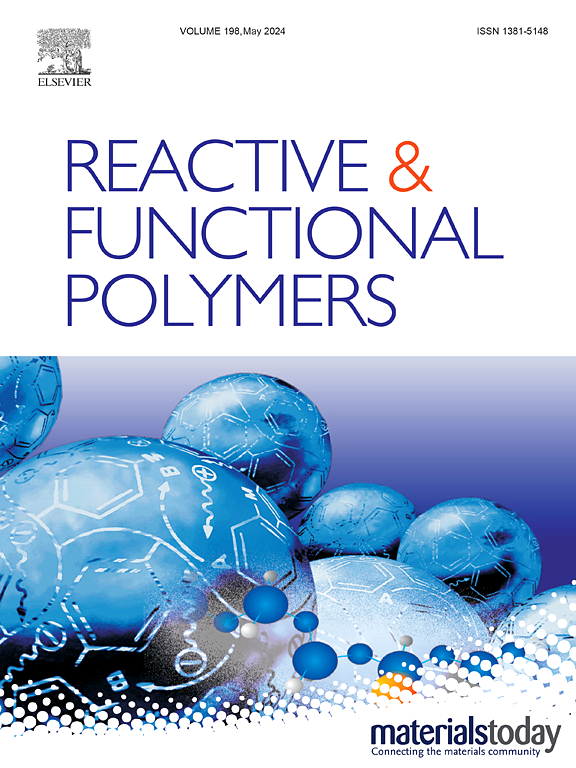Enhancement of flame retardancy and mechanical properties of unsaturated polyester resin through organic-inorganic hybrid flame retardant composites
IF 4.5
3区 工程技术
Q1 CHEMISTRY, APPLIED
引用次数: 0
Abstract
In order to fill the gap in the application of organic-inorganic flame retardant systems for flame-retarding unsaturated polyester resin (UPR) and develop highly efficient flame-retarded UPR composites to meet market demands, an organic-inorganic flame retardant system named PHAO@KL is proposed. A comprehensive analysis is conducted on the impacts of PHAO@KL on the flame-retardant and mechanical properties of unsaturated polyester, as well as its flame-retardant mechanism. The results obtained from the cone calorimeter demonstrated that the combination of 15 wt% PHAO and 15 wt% kaolin (KL) led to a reduction of 45.7 % and 38.9 % in the peak of the maximum heat release rate and the total heat release of the UPR composites, respectively. The PHAO@KL flame retardant system enhanced the mechanical properties of the UPR composites. Specifically, the tensile and flexural strengths of UPR/15PHAO@15KL reached 35.6 and 56.9 MPa, respectively, which were increased by 36.4 % and 31.4 % compared with those of pure UPR. Furthermore, the flame-retardant mechanism of PHAO@KL was investigated through X-ray photoelectron spectroscopy, Raman spectroscopy and scanning electron microscopy (SEM). The results indicated that the catalytic char-forming effect of PHAO interacted with the fragmented KL generated during combustion to form a stable heat-insulating barrier, thereby significantly strengthening the flame retardancy of the UPR composites and providing a reference for the development of organic-inorganic flame retardant systems.

通过有机-无机杂化阻燃复合材料增强不饱和聚酯树脂的阻燃性和力学性能
为了填补有机-无机阻燃体系在阻燃不饱和聚酯树脂(UPR)中的应用空白,开发高效阻燃UPR复合材料以满足市场需求,提出了一种有机-无机阻燃体系PHAO@KL。全面分析了PHAO@KL对不饱和聚酯阻燃性能和力学性能的影响,以及其阻燃机理。锥形量热计的结果表明,掺加15 wt%的pao和15 wt%的高岭土(KL)可使UPR复合材料的最大放热率峰和总放热率峰分别降低45.7%和38.9%。PHAO@KL阻燃体系增强了UPR复合材料的力学性能。其中,UPR/15PHAO@15KL的抗拉强度和抗弯强度分别达到35.6和56.9 MPa,比纯UPR分别提高36.4%和31.4%。通过x射线光电子能谱、拉曼光谱和扫描电镜对PHAO@KL的阻燃机理进行了研究。结果表明,PHAO的催化成炭效应与燃烧过程中产生的碎片化KL相互作用,形成稳定的隔热屏障,从而显著增强了UPR复合材料的阻燃性,为有机-无机阻燃体系的开发提供了参考。
本文章由计算机程序翻译,如有差异,请以英文原文为准。
求助全文
约1分钟内获得全文
求助全文
来源期刊

Reactive & Functional Polymers
工程技术-高分子科学
CiteScore
8.90
自引率
5.90%
发文量
259
审稿时长
27 days
期刊介绍:
Reactive & Functional Polymers provides a forum to disseminate original ideas, concepts and developments in the science and technology of polymers with functional groups, which impart specific chemical reactivity or physical, chemical, structural, biological, and pharmacological functionality. The scope covers organic polymers, acting for instance as reagents, catalysts, templates, ion-exchangers, selective sorbents, chelating or antimicrobial agents, drug carriers, sensors, membranes, and hydrogels. This also includes reactive cross-linkable prepolymers and high-performance thermosetting polymers, natural or degradable polymers, conducting polymers, and porous polymers.
Original research articles must contain thorough molecular and material characterization data on synthesis of the above polymers in combination with their applications. Applications include but are not limited to catalysis, water or effluent treatment, separations and recovery, electronics and information storage, energy conversion, encapsulation, or adhesion.
 求助内容:
求助内容: 应助结果提醒方式:
应助结果提醒方式:


